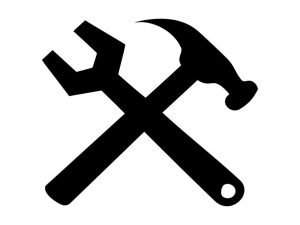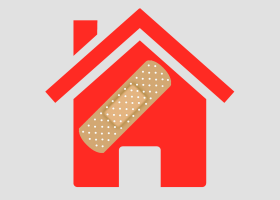While there are those who understand the real-estate market well, others see it as a…
Credit cards are a poor option for home renovation
Many individuals want to renovate their home to add new counter tops, floor surfaces and fixtures. In 2017, 1-in-3 homeowners paid for part of their renovations with a credit card. In fact, the median amount spend amount put on a credit card was $10,000. Yikes! And although many cite using a credit card to take advantage of reward points or 0% APR in the first 6 months, using a card isn’t the best option. The reward points gained from a card is small compared to the interest the card holder will pay; especially at 16% interest or more. Below are some common mortgage programs that were designed for home renovations:
FHA 203 (k)
There are two types of 203(k) loans available depending on whether the renovations are cosmetic or extensive remodeling.
- A limited 203(k) is available to make cosmetic improvements such as counter tops and floor surfaces and has a max of $35,000 available to the borrower.
- A standard 203(k) is for extensive remodeling such as adding another room to the home.
Note that with a standard 203(k), it is a requirement that the borrower hire a 203(k) consultant. Having a consultant is a great idea because they oversea the entire operation, making sure the contractor is transparent and stays on track. Some of this program’s benefits are a low credit score requirement of 620 and a low down payment of 3.5%.
Fannie Mae’s HomeStyle
Fannie Mae offers a fantastic program that allows the borrower to either buy a home that needs repairs or refinance their existing home to make improvements. A major advantage to HomeStyle is that it is one loan; So a borrower wont have to pull out a loan for their mortgage and then a second for renovations. To qualify, the borrower must have a minimum credit score of 620, a down payment of at least 5%, and a certified contractor must submit cost estimates and details of the work being done. The downside to this program is less flexibility with funds; They must be held in an escrow account directly payable to the contractor. However as a plus, both HomeStyle and the FHA 203(k) base the loan amount on completed value (value after renovation) rather than current value. Meaning more funds to use for renovations.
Home Equity Line of Credit (HELOC)
The HELOC has an advantage to those with a large project that will take time because it has a revolving balance that a home owner can tap into as large payments become due. However, a disadvantage to this program is having to use a home as collateral; Another form of acceptable collateral is an unsecured personal loan. Another disadvantage compared to 203(k) or HomeStyle is that the loan is based on current value versus completed value.
Cash-out Refinance
A tried and true cash-out refinance allows the borrower to use the equity built up in their loan for renovations. One of the largest advantages of going this route is the flexibility of funds to the borrowers and the possibility of a lower interest rate. since it is the borrower’s equity, the funds are at the disposal of the homeowner meaning no escrow account tied to a contractor. Couple that with refinancing into a lower interest rate, and the homeowner will save money in the long run. Howbeit a borrower needs at least 20% equity and generally a minimum credit score of 640 to qualify.
For more information, get in contact with us:






